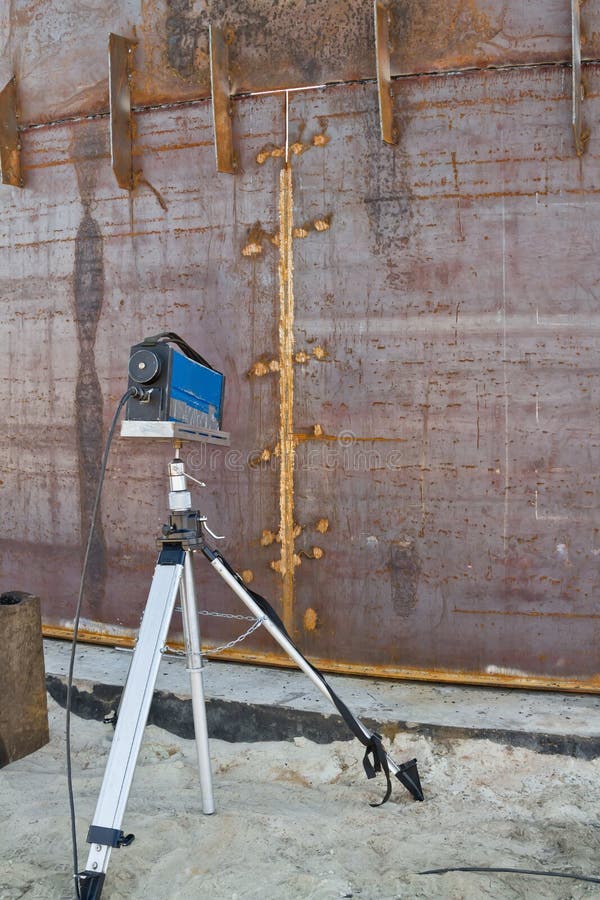Understanding the Secret Actions In Tank Welding Inspection Procedures
An In-depth Overview of Container Welding Assessment Requirements and Methodologies for Improved Weld High Quality and Efficiency
The value of welding examination criteria in the manufacturing of tanks can not be overstated, as they serve as the backbone for making certain weld integrity and operational dependability. Various assessment techniques, including aesthetic evaluations and advanced non-destructive screening approaches, are important in identifying prospective defects that can endanger performance. Additionally, adhering to regulative requirements not just boosts weld top quality but also alleviates the threat of pricey failures. As we explore the nuances of these techniques, it ends up being vital to consider how an organized approach can transform existing methods and result in substantial improvements in results.
Importance of Welding Examination Specifications

Welding inspection standards incorporate a variety of requirements, including product specifications, welding treatments, and credentials of personnel associated with the welding procedure. By enforcing these criteria, companies can methodically recognize and remedy prospective defects, thereby decreasing the likelihood of expensive repair services or catastrophic failings. Strenuous evaluation methods promote a culture of liability and precision, encouraging welders to maintain high degrees of workmanship.

Typical Welding Evaluation Methods


Ultrasonic Examining (UT) is another common technique, making use of high-frequency audio waves to detect inner flaws that might not be visible externally. This approach is specifically efficient for recognizing spaces or incorporations within the weld metal. Magnetic Bit Examining (MT) is additionally widely used, especially for ferromagnetic products, as it reveals surface and near-surface defects via the application of electromagnetic fields and ferrous bits.
Additionally, Liquid Penetrant Screening (PT) finds surface-breaking problems by applying a penetrant to the weld and after that utilizing a developer to extract the penetrant. Each of these strategies contributes to a detailed assessment strategy, making certain that welds fulfill the rigorous high quality requirements needed in container building and construction.
Regulative Standards and Compliance
Governing requirements and conformity are vital elements in ensuring the safety and security and dependability of bonded structures in storage tank building - Tank Welding Inspection. These criteria serve to establish minimum requirements for product residential properties, welding procedures, and inspection methods, therefore decreasing the danger of architectural failures and enhancing general performance
Key companies, such as the American Society of Mechanical Designers (ASME) and the American Welding Culture (AWS), provide guidelines that are widely adopted in the industry. Conformity with these standards not only makes certain adherence to finest techniques however additionally fulfills legal and contractual commitments, protecting the passions of stakeholders.
Regulatory bodies often mandate adherence to specific codes, such as ASME Code Area IX for welding credentials and API 650 for bonded tanks. These codes describe needs for welding strategies, qualifications of personnel, and testing approaches to verify weld stability.
Regular audits and evaluations are essential to preserving conformity, as they aid recognize discrepancies from developed standards. Non-compliance can lead to substantial fines, task delays, and safety and security dangers. Thus, a robust understanding of governing requirements and a commitment to compliance are critical in attaining top quality and durable bonded tank structures.
Non-Destructive Evaluating Approaches
Just how can the honesty of bonded structures be ensured resource without triggering damage? Non-destructive testing (NDT) techniques offer a durable service, enabling inspectors to evaluate weld high quality without compromising the product - Tank Welding Inspection. Among one of the most typical NDT strategies are ultrasonic screening (UT), radiographic screening (RT), magnetic particle testing (MT), and dye penetrant testing (PT)
Ultrasonic testing employs high-frequency acoustic waves to find inner imperfections and define material homes. It gives specific dimensions and is specifically reliable for thick products. Radiographic screening involves passing X-rays or gamma rays with the weld, producing images that disclose architectural defects such as fractures or voids. This method is important for examining the integrity of complex welds.
Magnetic fragment screening is suited for ferromagnetic products, where magnetic areas reveal surface and near-surface discontinuities. Dye penetrant testing utilizes a fluid color to highlight surface-breaking imperfections, making it an efficient technique for non-porous products.
Each of these NDT approaches has unique benefits, allowing for detailed evaluations customized to specific materials and welding processes. By executing these strategies, sectors can Continued make sure the dependability and security of bonded frameworks, ultimately enhancing general efficiency.
Enhancing Weld High Quality Through Assessment
Efficient examination plays an essential role in enhancing weld top quality, acting as an important checkpoint in the fabrication procedure. By determining prospective problems early, evaluations reduce the threat of compromised architectural stability and make certain compliance with sector standards. Utilizing a mix of aesthetic exams, non-destructive testing (NDT) techniques, and mechanical assessments, examiners can find issues such as porosity, cracks, and incomplete fusion.
Implementing a robust inspection procedure not just improves the general top quality of welds yet additionally cultivates a culture of accountability among welders and producers. Regular training and accreditation of examination employees guarantee that they are equipped with the necessary skills to identify Full Report and deal with prospective issues properly. This positive strategy minimizes rework and associated costs, inevitably adding to forecast performance.
Additionally, extensive documentation of inspection searchings for gives valuable insights into reoccuring concerns, promoting continuous renovation in welding methods. By leveraging advanced innovations, such as automated ultrasonic testing or electronic radiography, weld quality can be enhanced via more exact assessments. In verdict, a strenuous assessment procedure is essential in achieving top notch welds, guaranteeing security, reliability, and durability in container manufacture.
Conclusion
Finally, the application of strenuous storage tank welding assessment requirements and approaches is important for ensuring weld stability and efficiency. By utilizing a combination of visual examinations, non-destructive screening methods, and adherence to regulatory standards, organizations can efficiently recognize and mitigate prospective problems. Promoting a culture of liability among welders even more enhances the quality of welding processes. Inevitably, these methods add to minimized architectural failings, lower repair costs, and enhanced operational efficiency within the sector.